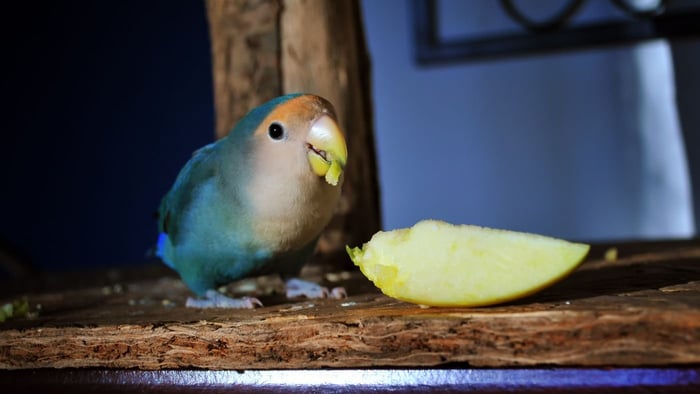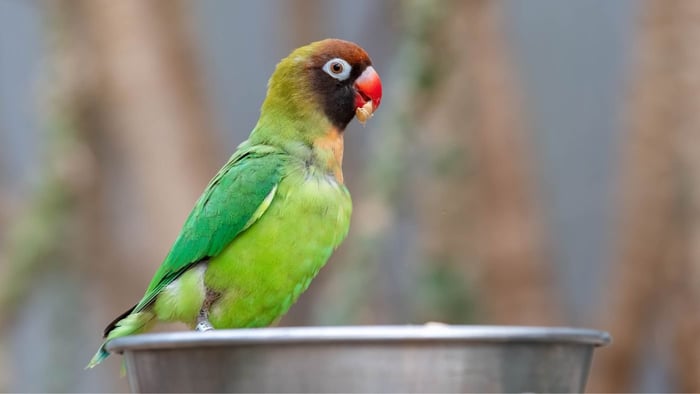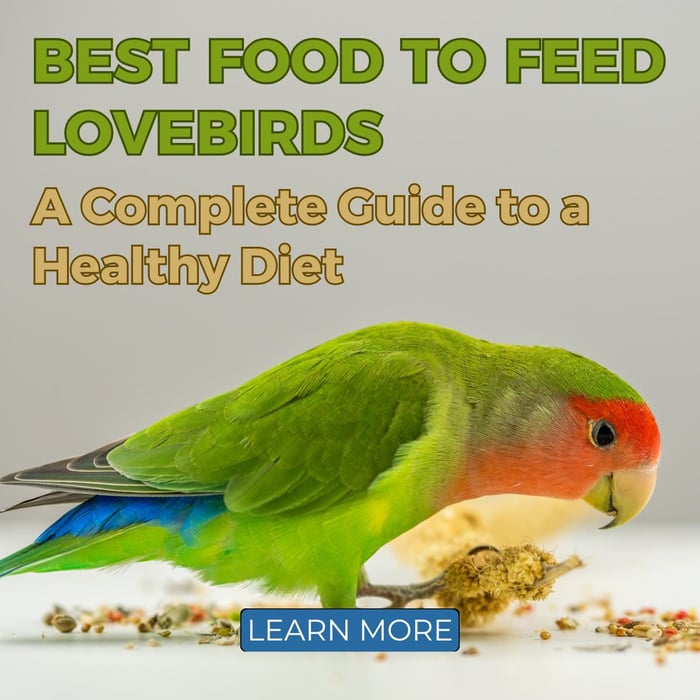The Best Fruits for Lovebirds: A Colourful Guide to a Healthy Diet
Feeding your lovebird a nutritious, balanced diet is one of the most important parts of keeping them happy, active, and healthy. While pellets and vegetables form the foundation of good nutrition, fruits add a valuable burst of vitamins, hydration, and enrichment. When served in moderation, the right fruits support both physical and mental well-being. In this guide, we'll explore the best fruits for lovebirds, how often to feed them, and which ones to avoid, so you can confidently provide your feathered friend with a safe and enjoyable diet.
Why Offer Fruits to Lovebirds?
In the wild, lovebirds feed on a variety of seeds, berries, fruits, and greens. Mimicking that natural diversity in their diet helps promote good digestion, immunity, and behaviour. Fruits provide your lovebird with:
- Essential vitamins and minerals, including vitamins A and C
- Natural hydration and energy
- Antioxidants that support healthy feathers and immunity
- Exciting textures and colours that encourage foraging and curiosity
However, not all fruits are suitable, and too much fruit can lead to excess sugar intake. Offer fresh fruit as no more than 10–15% of your lovebird's overall diet.
Best Fruits for Lovebirds
Let's look at the top safe, healthy, and delicious fruits your lovebird will love:
Apples (seedless)
Apples are crisp, sweet, and packed with vitamins A and C. They're perfect for an occasional snack, but be sure to remove the seeds and core, as they contain toxins harmful to birds. Cut into small, bite-sized slices for easy handling.
Bananas
Soft, nutritious, and naturally sweet, bananas are ideal for lovebirds. They're rich in potassium and fibre, supporting digestion and energy. Serve in small chunks or mash for a fun and easy treat.
Berries (blueberries, raspberries, blackberries, strawberries)
These antioxidant-packed fruits are among the best fruits for lovebirds. They support immune health, brighten feathers, and provide natural enrichment.
Grapes
Hydrating and delicious, grapes are a lovebird favourite. Offer seedless, halved grapes occasionally to avoid too much sugar. They make a refreshing treat on warm days.
Mango
This tropical fruit is rich in vitamin A, supporting strong vision and a healthy immune system. Peel the skin, remove the stone, and cut into small cubes before offering.
Papaya
Papaya is gentle on digestion and high in beneficial enzymes and antioxidants. The soft texture makes it easy for lovebirds to eat, and it's excellent for promoting feather condition.
Melon (watermelon, cantaloupe, honeydew)
Melons are hydrating and light, making them a great choice for summer. Remove seeds and rind, then offer small cubes. Because of their high water content, feed in moderation.
Pomegranate
Lovebirds adore pomegranate seeds! They're rich in antioxidants and fun to pick at, providing both nutrition and entertainment. Expect a little mess, but it's worth it for the health benefits.
Kiwi
Kiwi adds a zesty twist to your lovebird's diet. High in vitamin C and fibre, it helps with digestion and boosts immunity. Peel and slice into thin pieces before serving.
Oranges (in moderation)
Oranges are full of vitamin C but should be offered occasionally due to their acidity. A small slice now and then is a refreshing change.
Fruits to Offer Occasionally
Other fruits like pears, peaches, plums, pineapple, and cherries (without pits) are safe for lovebirds but should be offered sparingly. Rotate these fruits to keep your bird's meals varied and interesting.
Fruits to Avoid
Some fruits can be harmful or even toxic to lovebirds. Avoid the following:
- Avocado – contains persin, which is toxic to birds
- Apple seeds and stone fruits – contain cyanide compounds
- Rhubarb – contains oxalic acid, harmful to birds
Introduce new fruits gradually and observe your lovebird's droppings and behaviour to ensure they tolerate each type well.
How Often to Feed Fruit
Fruits should make up around 10–15% of your lovebird's total diet. The rest should include high-quality pellets, such as Askio Nature Complete Parrot Food Pellets, and a variety of vegetables like spinach, carrots, and peppers. Offer a small portion of fruit a few times a week and mix it into their main meal to encourage foraging.
Serving Tips for Success
- Wash all fruits thoroughly before serving
- Remove seeds, skins, and pits when necessary
- Cut into small, manageable pieces
- Rotate fruit types to keep meals interesting
- Remove uneaten fruit after a few hours to prevent spoilage
Final Thoughts on the Best Fruits for Lovebirds
Offering the best fruits for lovebirds is more than just a tasty treat - it's a way to enhance their health, happiness, and enrichment. With a thoughtful balance of pellets, vegetables, and fresh fruits, you'll keep your lovebird bright-eyed, energetic, and thriving.
Remember, moderation and variety are key to long-term well-being.
Ready to take your lovebird's diet to the next level? Explore our full range of Lovebird Food and Lovebird Treats at Parrot Essentials. Discover expertly selected, healthy options that your bird will adore.
Join our Parrot Essentials Facebook Group to share photos of your lovebird's favourite fruits and connect with other passionate bird owners.
FAQs
Can lovebirds eat dried fruits?
Yes, but only if they are unsweetened and free from sulphites. Dried fruits are calorie-dense, so offer very small amounts occasionally.
Is fruit juice safe for lovebirds?
Freshly squeezed, diluted juice is acceptable rarely, but avoid commercial juices with added sugars or preservatives.
What if my lovebird won't eat fruit?
Try mixing small fruit pieces into their usual food or eating fruit near them. Lovebirds are curious and may copy you. Patience and variety help.
Can baby lovebirds eat fruit?
Yes, but start with soft fruits like banana or papaya and introduce them gradually alongside their main weaning diet.




